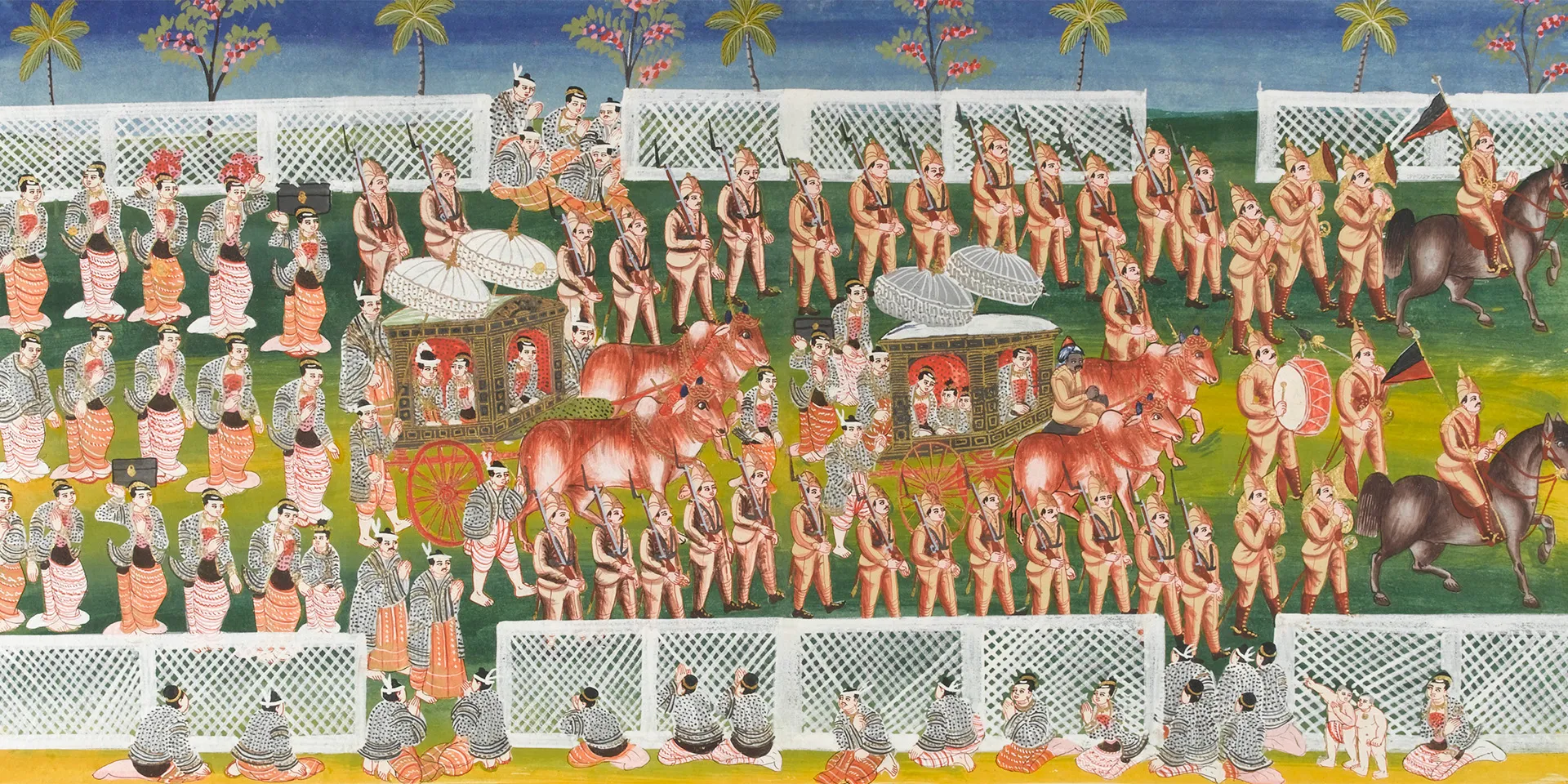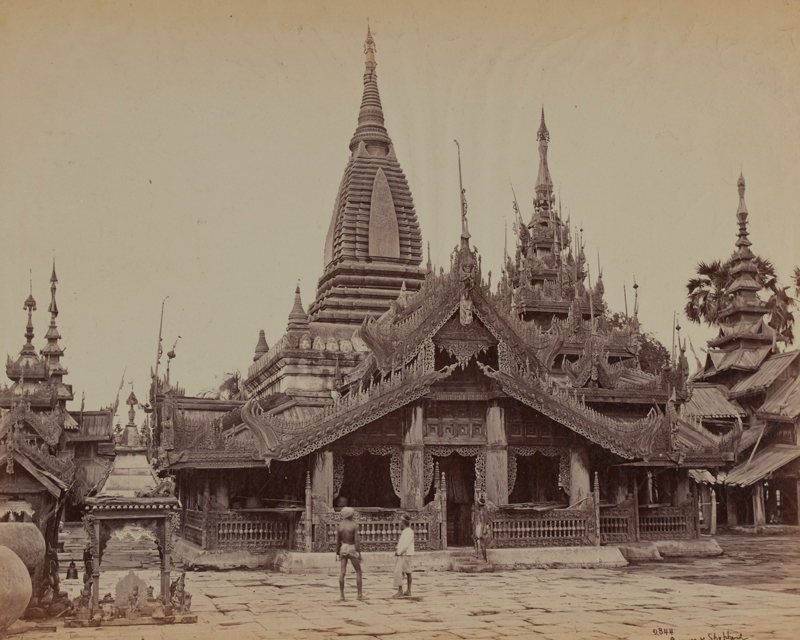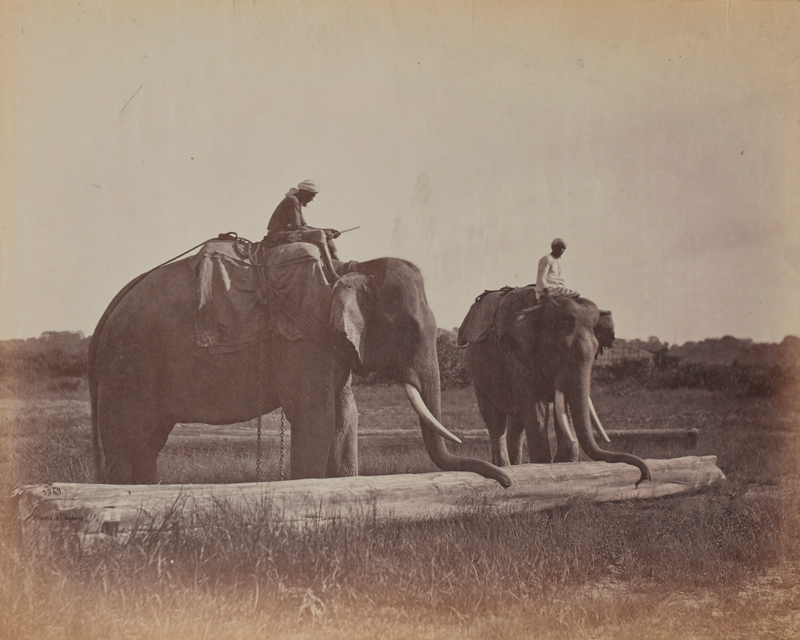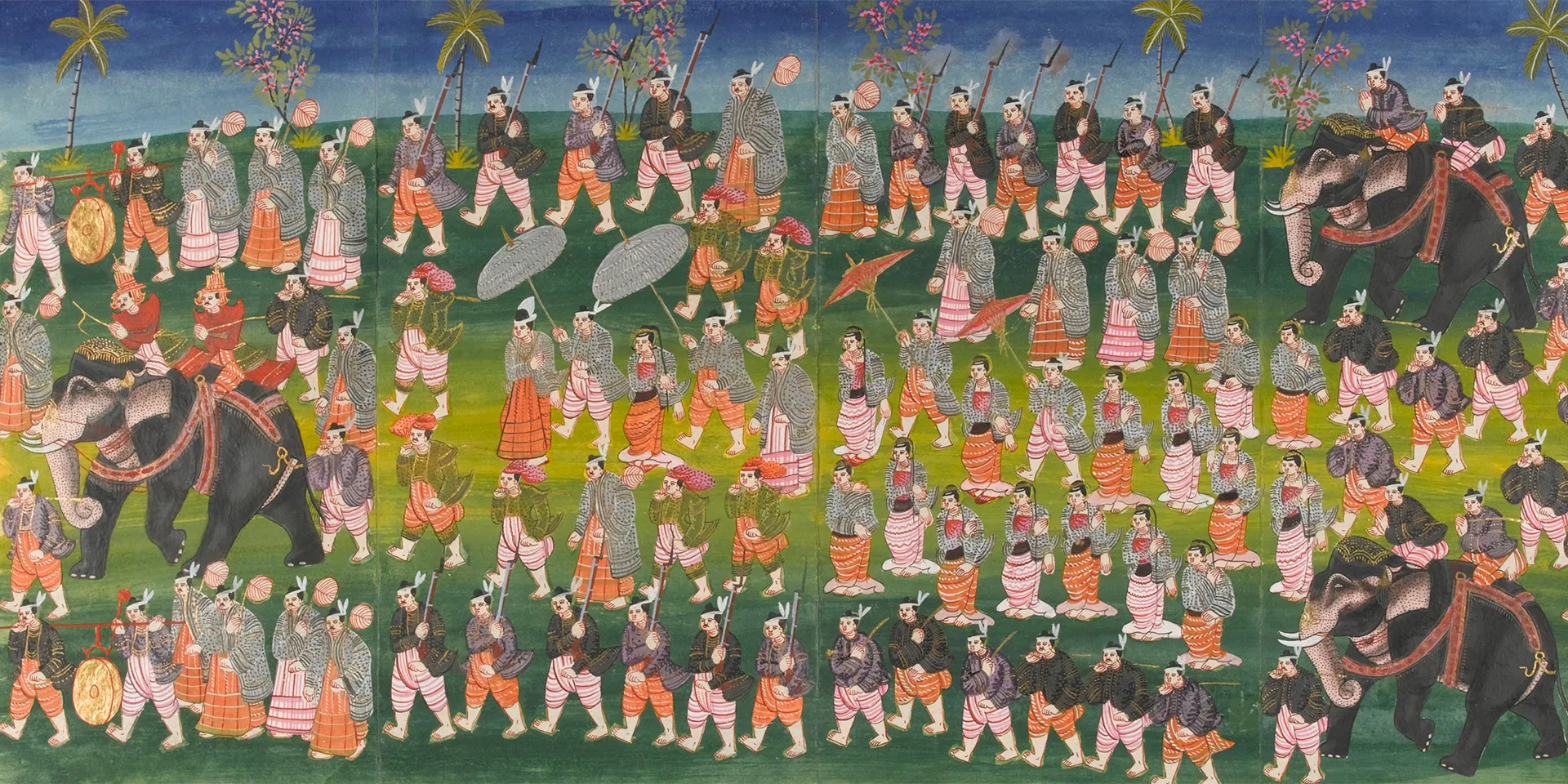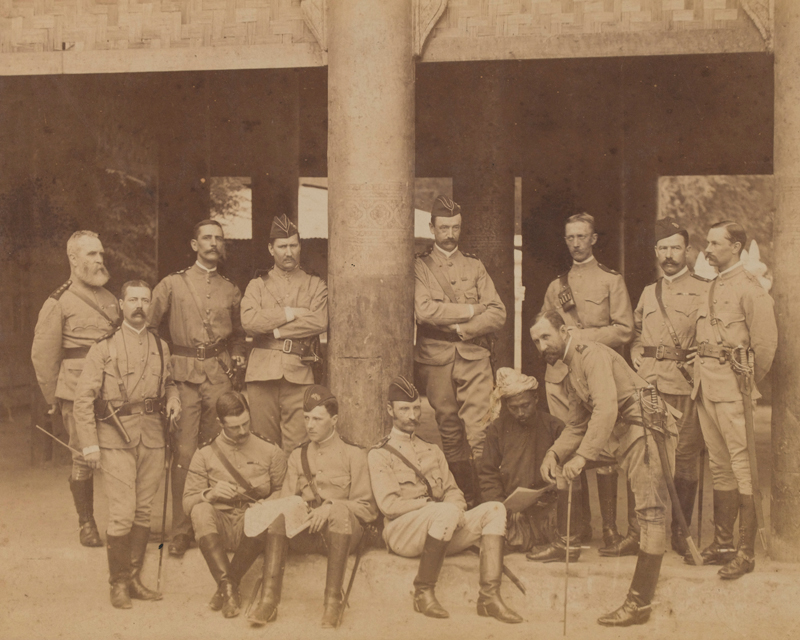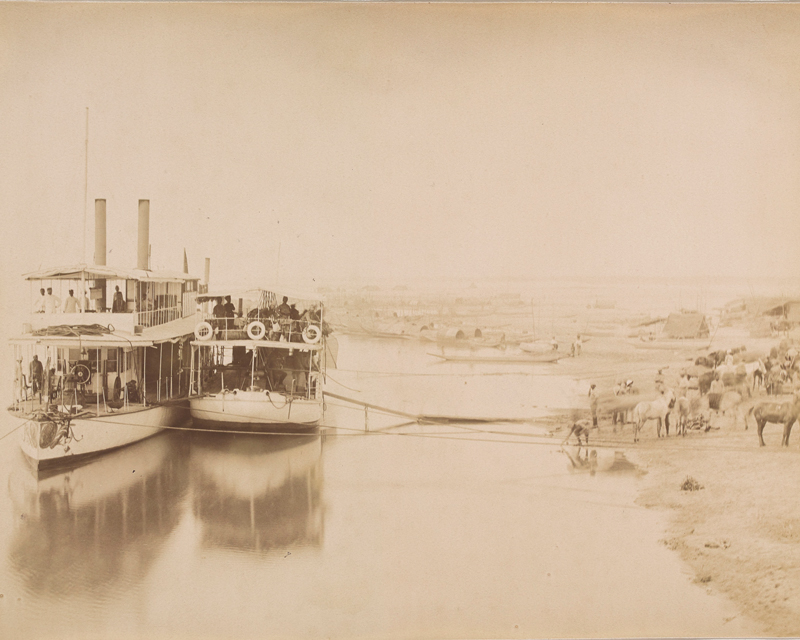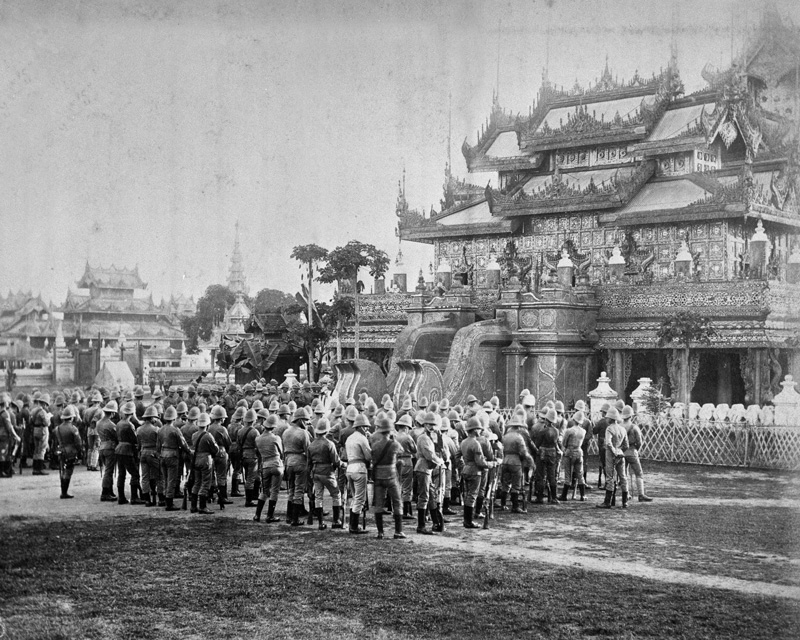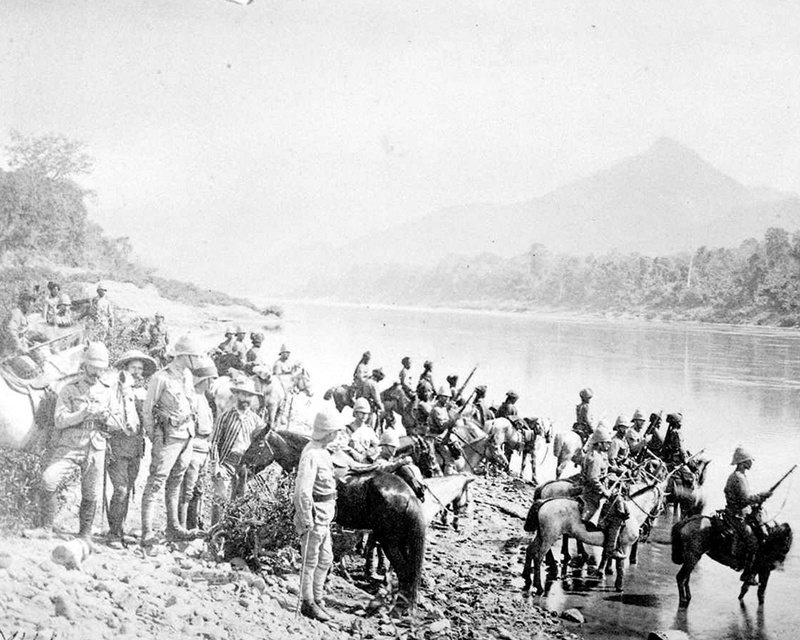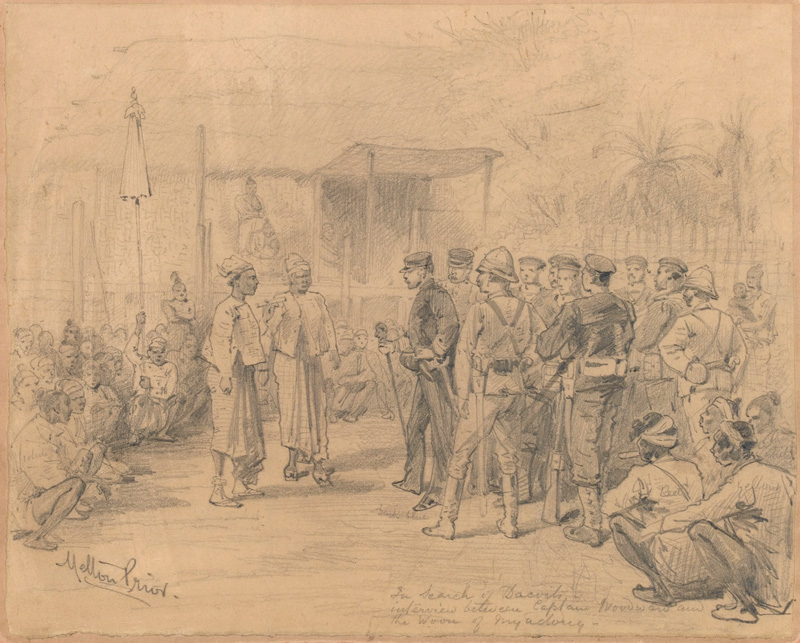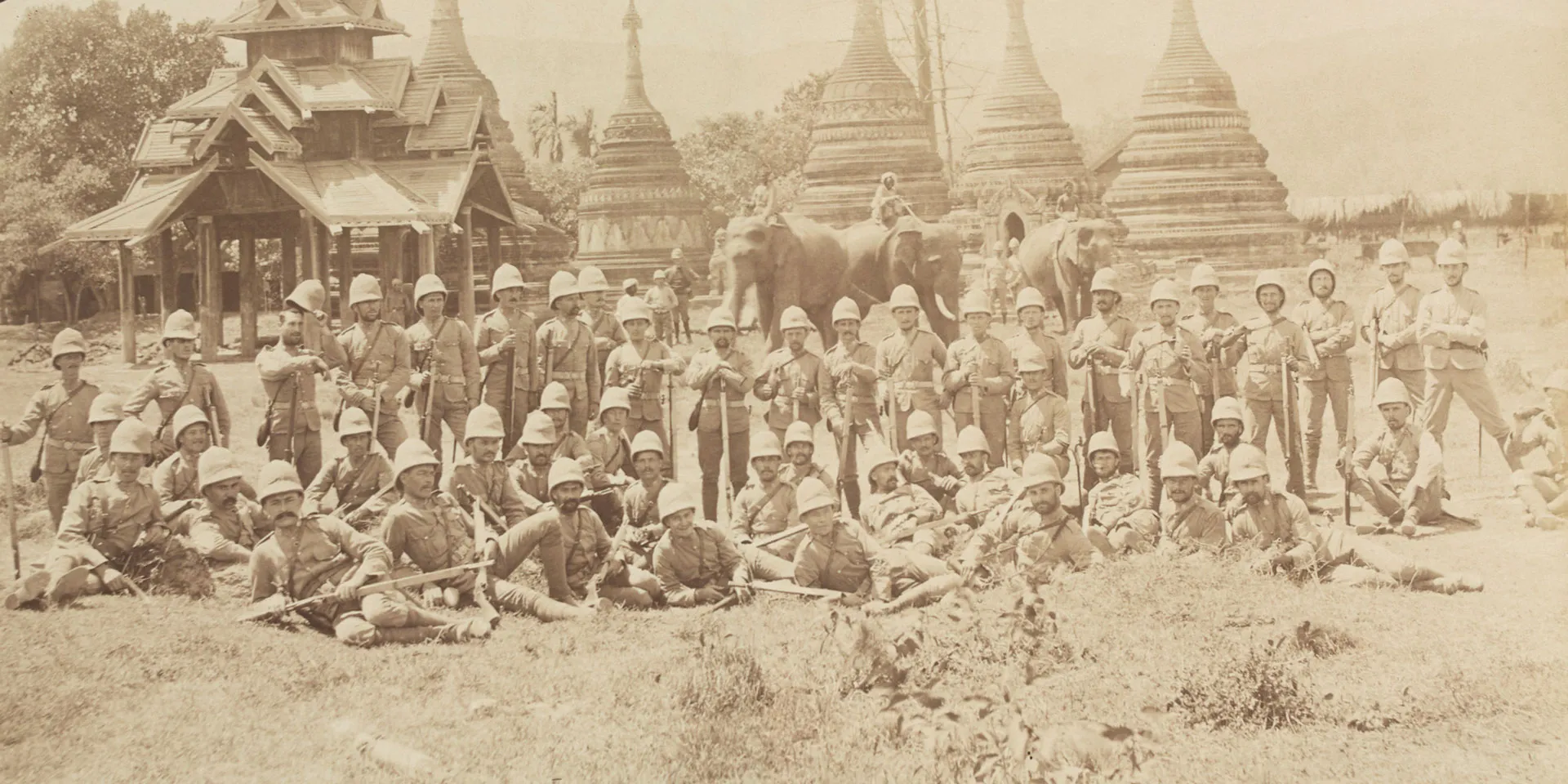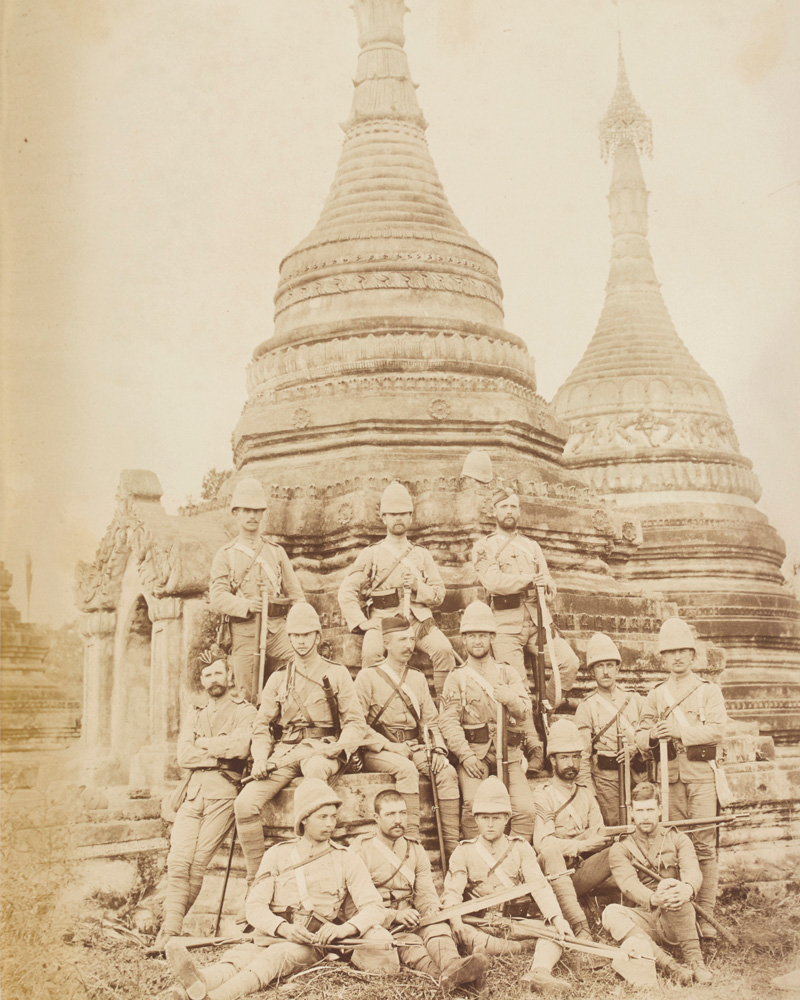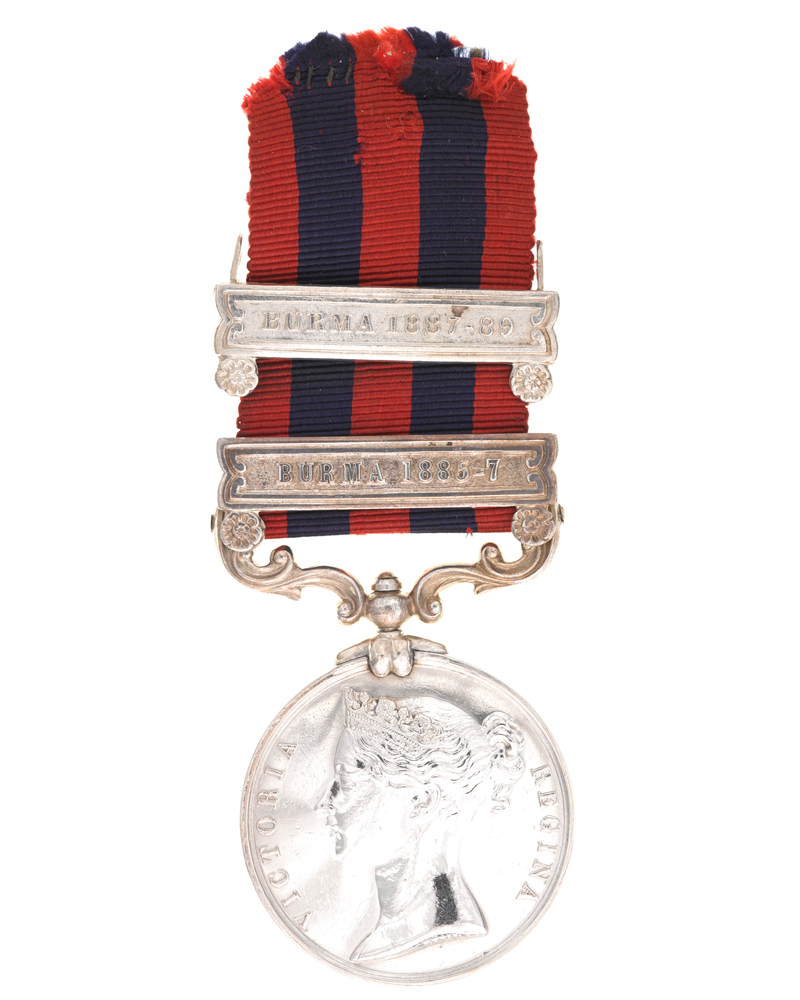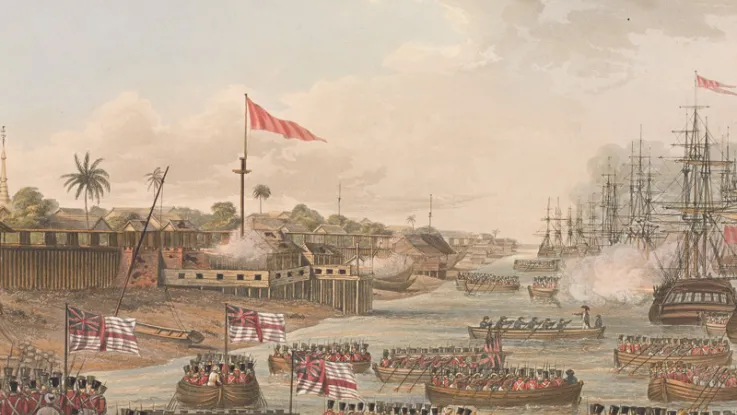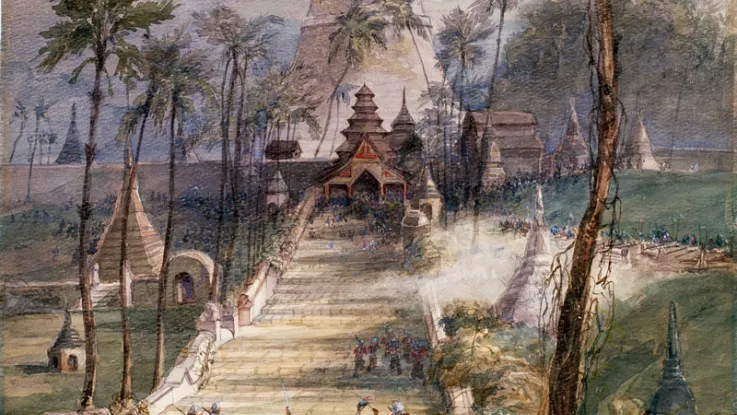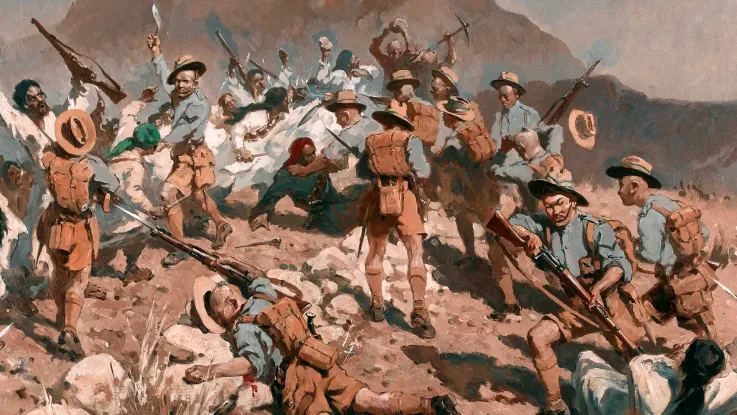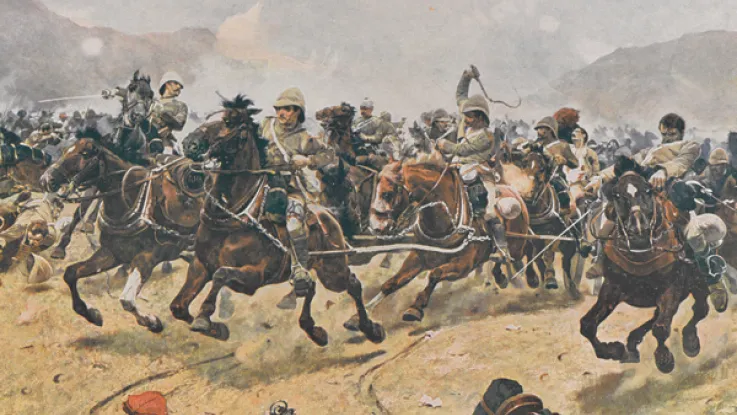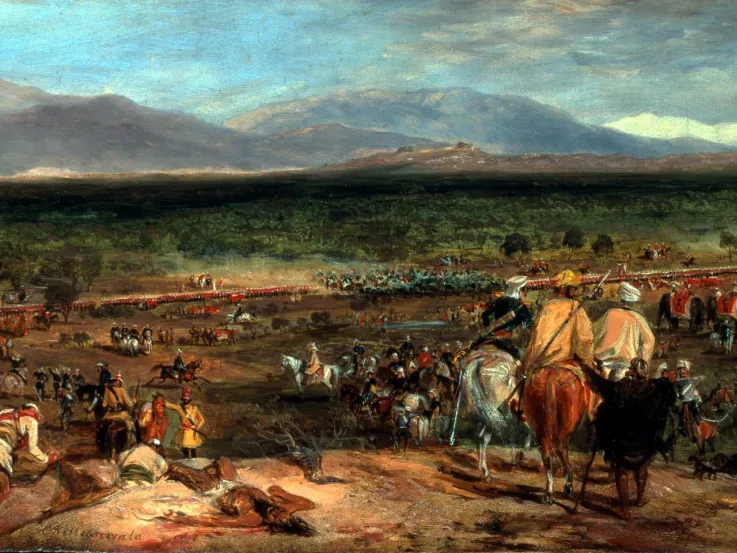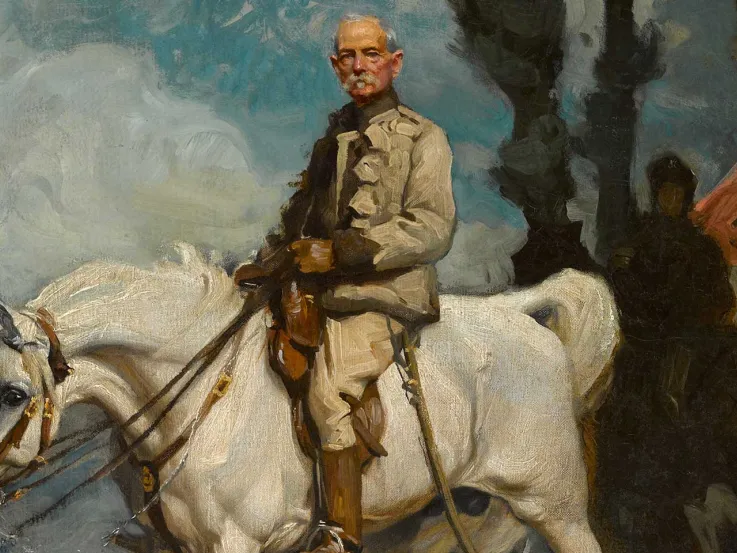Origins
The First Burma War (1824-26) and the Second Burma War (1852-53) both resulted in large tracts of Burmese territory being annexed to British India.
For the remaining part of independent Burma - primarily composed of Upper Burma - relations with British India were fairly stable until a royal succession crisis in 1878. The new Burmese king, Thibaw Min, ordered the withdrawal of the British Resident from the royal capital of Mandalay, effectively ending diplomatic links between the countries.
During the 1880s, the British grew increasingly concerned about Burmese military and trading links with the French. By then, the latter had expanded their colonial rule in Southeast Asia right up to the borders of Burma.
At the same time, the Burmese continued to find fault with the British, taking great exception to new territorial borders marked out by a British Indian commission in 1881.
Trade dispute
In 1885, the Burmese imposed severe fines on the Bombay and Burma Trading Corporation (BBTC) for under-reporting its teak logging and not paying its Burmese employees fully.
The British government claimed the fines were unjust and insisted that the Burmese accept a British-appointed arbitrator to settle the dispute. When they refused, the British issued an ultimatum on 22 October 1885.
The British demanded that any legal action or fines against the BBTC be suspended and that Burma accept a new British Resident in Mandalay. They also expected the Burmese to agree to British supervision of their foreign relations and to facilitate the development of British trade between northern Burma and China.
War declared
When King Thibaw rejected the ultimatum, the British decided to invade. Three brigades, under the overall command of Major-General Sir Harry Prendergast, were mobilised to occupy Upper Burma.
With the addition of supporting logistic, engineering and medical units, the Upper Burma Field Force amounted to nearly 10,000 British and Indian soldiers.
River campaign
Upper Burma was covered in dense jungle, so the easiest way to advance north from British-controlled Rangoon (Yangon) was to sail up the River Irrawaddy towards Mandalay. Using around 50 low-draft steamers, many of which towed barges, they advanced at such a speed that the Burmese had little chance to organise effective resistance.
On 17 November 1885, the river fleet neutralised shore batteries at Minhla. A brigade of Indian soldiers was then landed and stormed several redoubts, defeating the Burmese.
The advance continued. Over the next few days, troops and sailors of the Naval Brigade captured a succession of Burmese river defences and gun emplacements at Nyaung-U, Pakokku and Myingyan.
A divided foe
Burmese military resistance was somewhat half-hearted. King Thibaw's subjects had divided loyalties, especially after the execution of royal rivals that had accompanied his accession to the throne.
Some were taken in by British propaganda and opted not to fight. They mistakenly believed the British had no plans to occupy the country, but intended only to replace Thibaw with Prince Nyaungyan, his exiled half-brother.
Surrender
Meanwhile, the river fleet pushed on. After it threatened to bombard Ava (Inwa), the former royal capital, Thibaw ordered his troops to surrender on 26 November. Two days later, Mandalay was secured by British soldiers.
From there, Prendergast continued northwards to reach Bhamo during December. This strategic move was designed to forestall the Chinese, who had their own claims and border disputes with the Burmese.
Annexation
Thibaw and his family were exiled to Ratnagiri, near Bombay (Mumbai) in India. The king described those who had deposed him as the ‘bull-faced, earth-swallowing English’.
On 1 January 1886, Lord Dufferin, the Viceroy of India, announced that Upper Burma was to be annexed by the British.
Guerrilla war
When it became clear that the British had no intention of installing a new king, but instead were going to annex Upper Burma, a rebellion began. Various Burmese groups, including irregular tribesmen and soldiers of the former Burmese army, launched an insurrection that rumbled on until the mid-1890s.
The British called the rebels 'dacoits', a local term for bandits. Although some criminals took advantage of the unrest to loot and pillage villages, the great majority of the insurgents were motivated by anti-colonial sentiment.
Upper Burma was finally secured under the direction of General Sir Frederick Roberts, the Commander-in-Chief in India. He encouraged the construction of a network of small military and police posts across the country. These were supported by lightly equipped mobile columns that were despatched to trouble spots.
During these campaigns, several foot regiments formed mounted infantry platoons for scouting and skirmishing. The troops travelled great distances by horse, but fought on foot with rifles.
Most British and Indian casualties during these operations were caused by disease rather than enemy fire. Despite this, medical care had improved when compared to the earlier Burma wars, with quinine now used to combat malaria.
Recognition
The clasps for ‘Burma 1885-87’ and ‘Burma 1887-89’ were added to the Indian General Service Medal. These were awarded to troops who took part in the initial invasion, as well as the subsequent anti-guerrilla campaigns that followed the annexation of Upper Burma.
Later, additional clasps were issued for several small punitive expeditions against rebellious Burmese tribes, including 'Chin Hills 1892-93' and 'Kachin Hills 1892-93'.

